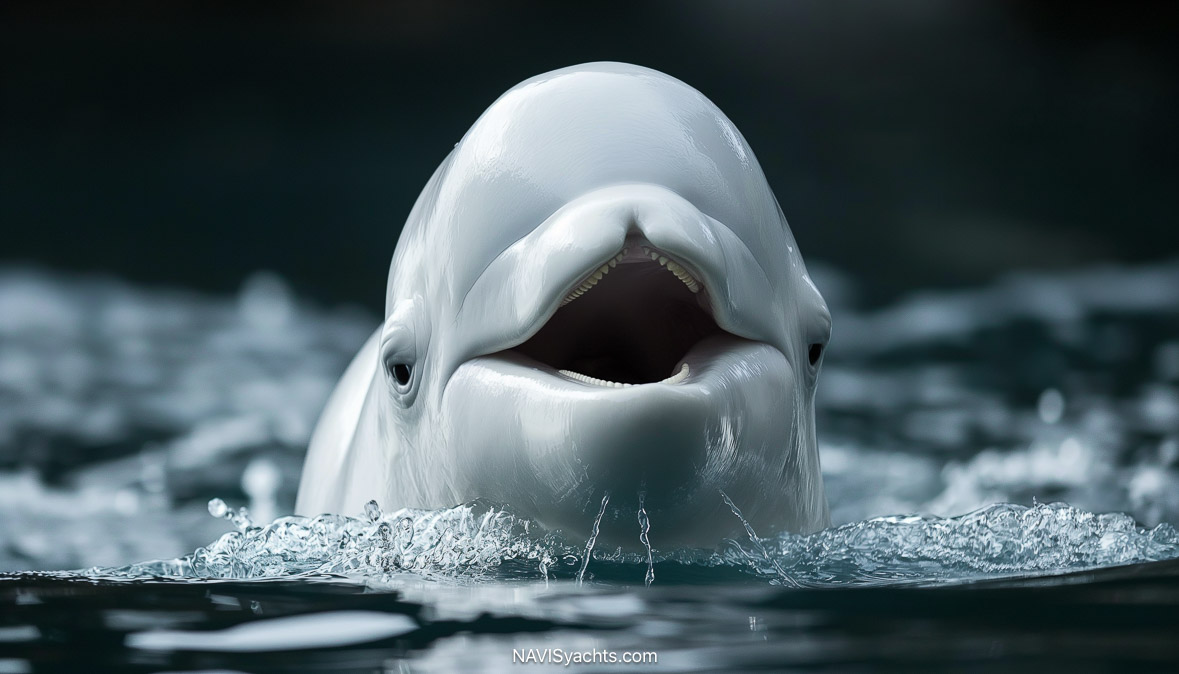The beluga whale known as “Hvaldimir,” nicknamed after the Norwegian word for whale (hval) and Russian President Vladimir Putin, was found dead off the coast of Norway in September 2024. This discovery marks a tragic end to a story that captured global attention when Hvaldimir first appeared in Norwegian waters in 2019, sparking speculation that he was trained as a spy by the Russian military.
The Origins of Hvaldimir
Hvaldimir was first spotted near the island of Ingoya, in northern Norway, approximately 300 kilometers from Russia’s maritime border. The whale was wearing a harness fitted with a GoPro camera, marked with the words “Equipment of St. Petersburg.” This unusual sight led to widespread speculation that Hvaldimir had been trained by the Russian Navy, possibly for espionage purposes, as similar practices involving marine animals like dolphins and sea lions have been documented.
Beluga whales are native to the Arctic and sub-Arctic regions, and they are known for their sociability and intelligence. These mammals can live up to 60 years and typically grow to about 13 to 20 feet in length, weighing between 1,100 and 2,200 pounds. Their distinctive white color and lack of a dorsal fin make them easily recognizable. Belugas are also highly vocal, earning them the nickname “canaries of the sea” due to the wide range of sounds they produce.
Hvaldimir’s Interaction with Humans
Hvaldimir’s behavior further fueled the spy narrative. He exhibited a noticeable lack of fear towards humans and responded to hand signals, suggesting he had been in close contact with people for an extended period. Norwegian authorities and marine biologists concluded that Hvaldimir likely spent time in captivity, which was consistent with the theory that he was part of a Russian military program.
Despite the ominous speculation surrounding his origins, Hvaldimir quickly became a beloved figure in Norway. He regularly approached boats, interacted with locals, and even played with fishermen, who occasionally fed him. His presence in Norwegian waters symbolized a unique and unexpected bridge between humans and wildlife, despite the political undertones of his story.
The Final Chapter
In the years following his initial appearance, Hvaldimir continued to be a subject of fascination and concern. He was tracked by Marine Mind, a non-profit organization focused on the welfare of marine life. The whale was last seen in good health just a day before his body was discovered floating in Risavika Bay, southern Norway. His sudden death has left many questions unanswered, with marine biologists and authorities investigating the cause.
Marine biologist Sebastian Strand, who had been monitoring Hvaldimir, expressed his sorrow over the whale’s death, stating, “He was in good condition just the day before. It’s absolutely horrible, and we need to understand what happened.” Hvaldimir was estimated to be around 15 years old, relatively young for a beluga, which can live several decades longer under normal circumstances.
The Legacy of Spy Whales
The use of marine animals like Hvaldimir in military operations is not entirely unprecedented. Countries such as the United States and the Soviet Union have historically trained dolphins, sea lions, and possibly whales for tasks ranging from mine detection to espionage. The death of Hvaldimir has reignited discussions about the ethical implications of using animals in such roles and the consequences they face when released or lost in the wild.
Hvaldimir’s story is a poignant reminder of the complex relationship between humans and wildlife, particularly when political and military interests are involved. His presence in Norwegian waters over the years offered a glimpse into the potential uses of marine mammals in intelligence operations, while also highlighting the need for greater transparency and ethical considerations in such practices.
As investigations into Hvaldimir’s death continue, his story serves as a tragic yet compelling chapter in the ongoing narrative of how humans interact with and impact the natural world.
Key Takeaways:
• Hvaldimir’s Origins: Believed to be a Russian spy whale due to the harness he was found wearing in 2019.
• Human Interaction: Known for his friendly behavior, Hvaldimir became a beloved figure in Norway despite the espionage rumors.
• Death and Investigation: Found dead in southern Norway in September 2024, with investigations ongoing to determine the cause.
• Legacy: His story underscores the ethical dilemmas of using animals for military purposes and the consequences they face as a result.
Hvaldimir’s legacy will likely continue to inspire both curiosity and debate, particularly as we continue to learn more about the use of marine mammals in human endeavors.




